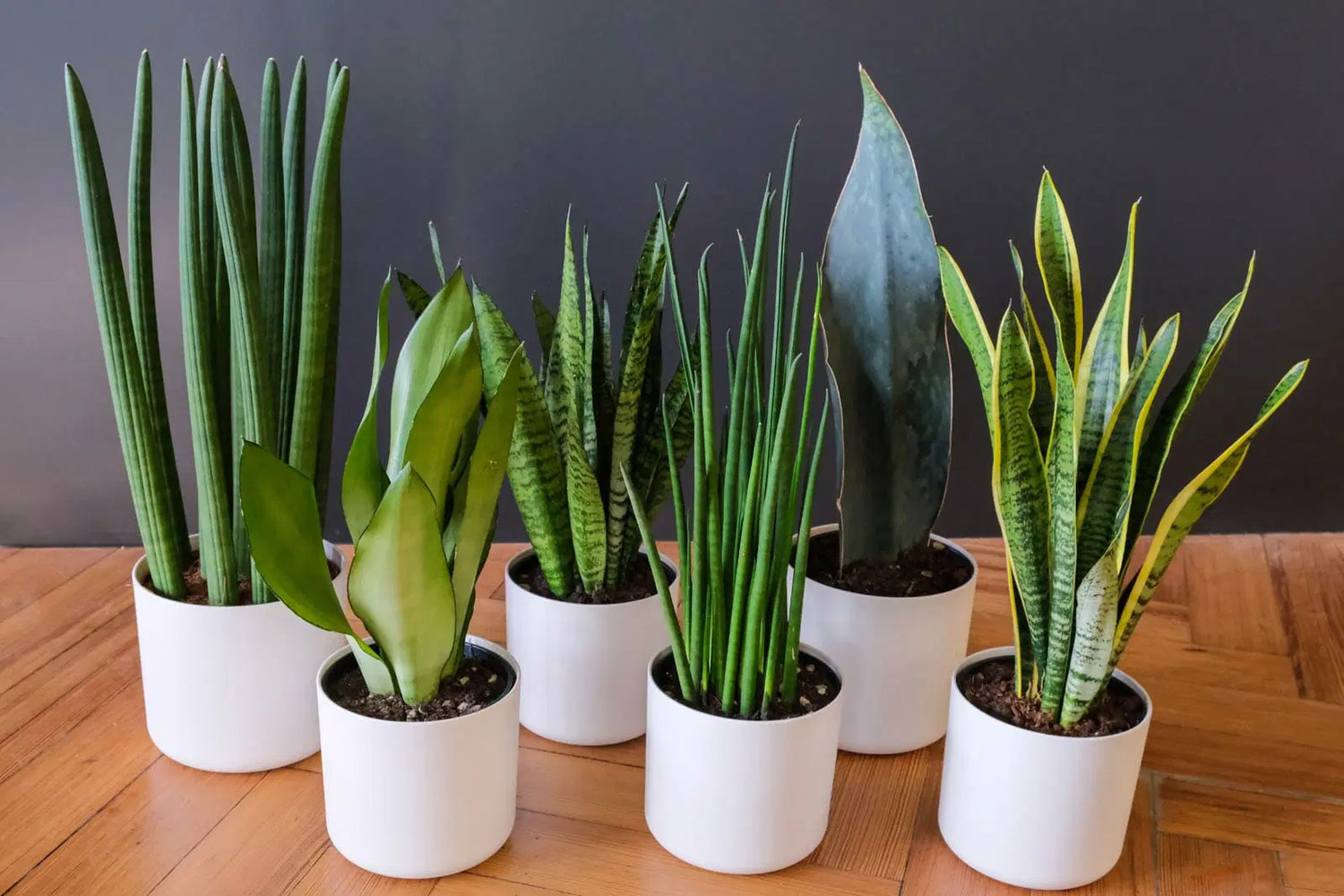Light Optimization for Snake Plants in Short Winter Days
Winter often brings shorter days, reduced sunlight, and fluctuating indoor temperatures, posing significant challenges for indoor plant enthusiasts. Snake plants (Sansevieria), known for their hardiness and air-purifying qualities, can thrive indoors even during the colder months. However, optimizing light exposure is crucial to ensure these resilient plants remain healthy and vibrant throughout the winter season. In this comprehensive guide, we’ll explore effective strategies for light optimization for snake plants in short winter days, helping you maintain lush and thriving greenery all year round.
1. Understanding Snake Plants Light Requirements

Before diving into optimization strategies, it’s essential to understand the natural light preferences of snake plants:
- Adaptable Light Needs: Snake plants are highly adaptable and can thrive in a variety of light conditions, from low to bright indirect light.
- Optimal Growth: While they can survive in low light, snake plants grow best in bright, indirect sunlight, which promotes vigorous growth and vibrant foliage.
- Tolerance to Low Light: Their ability to tolerate low light makes them ideal for winter months when natural daylight is limited.
Also Read- Snake Plants And Allergies: Are They Safe For Sensitive Individuals?
2. Maximizing Natural Light During Winter
Position Near Windows
- South or East-Facing Windows: Place your snake plants near south or east-facing windows where they can receive the maximum amount of natural light during the day.
- Avoid Direct Sunlight: While snake plants enjoy bright light, direct sunlight can scorch their leaves. Ensure they receive bright, indirect light instead.
Clean Windows Regularly
- Maximize Light Intake: Dust and dirt on windows can significantly reduce the amount of light that enters your home. Regularly cleaning your windows ensures maximum light penetration.
- Leaf Dusting: Gently wipe the leaves of your snake plants to remove dust and allow for better photosynthesis.
Use Sheer Curtains
- Diffuse Sunlight: Sheer curtains can help diffuse the harsh winter sunlight, providing a steady and gentle light source that snake plants thrive under.
- Maintain Light Balance: This prevents overexposure while still ensuring your plants receive adequate light.
Also Read- Eco-Friendly Gardening With Snake Plants: Sustainable Practices
3. Utilizing Artificial Grow Lights

Choosing the Right Grow Lights
- LED Grow Lights: Energy-efficient and long-lasting, LED grow lights are an excellent choice for indoor snake plants. They emit the necessary light spectrum without generating excess heat.
- Fluorescent Bulbs: Another effective option, fluorescent grow lights are affordable and provide sufficient light for snake plants during winter.
Proper Placement of Grow Lights
- Distance from Plants: Position grow lights about 12-18 inches above your snake plants to ensure they receive adequate light without overheating.
- Duration of Light Exposure: Keep grow lights on for 12-14 hours a day to mimic natural daylight cycles, supporting healthy growth.
Timers for Consistency
- Automate Lighting: Use timers to maintain a consistent lighting schedule. This ensures your snake plants receive the right amount of light each day without manual intervention.
- Prevent Overexposure: Timers help avoid overexposure to artificial light, which can stress the plants.
Also Read- Snake Plant Pet-Friendly Homes: Safe Greenery For Your Furry Friends
4. Strategic Plant Placement

Group with Other Plants
- Create Microclimates: Grouping snake plants with other indoor plants can create a microclimate that enhances light distribution and humidity levels.
- Shared Light Sources: This arrangement ensures that multiple plants benefit from the same light source, maximizing efficiency.
Elevate Plants for Better Light Access
- Use Plant Stands: Elevate your snake plants using plant stands or shelves to position them closer to light sources.
- Layering Plants: Arrange plants in layers to ensure each one receives adequate light, preventing shadows and uneven growth.
5. Rotating Your Snake Plants

Promote Even Growth
- Weekly Rotation: Rotate your snake plants 90 degrees every week to ensure all sides receive equal light exposure. This promotes balanced and symmetrical growth.
- Prevent Lopsided Growth: Regular rotation prevents the plants from leaning towards the light source, maintaining their upright and structured appearance.
Encourage Full Foliage Development
- Balanced Light Distribution: Ensuring all parts of the plant receive light encourages fuller and healthier foliage, enhancing the plant’s overall aesthetic.
Also Read- Snake Plants And Joint Health: Alleviating Arthritis Pain Naturally
6. Using Reflective Surfaces and Light Enhancers

Mirrors and Reflective Panels
- Amplify Light: Position mirrors or reflective panels near your snake plants to bounce additional light onto their leaves. This increases the overall light exposure without additional lighting costs.
- Enhance Brightness: Reflective surfaces can make your indoor space appear brighter, benefiting not only your plants but also your home’s ambiance.
Light Enhancing Accessories
- Reflective Plant Covers: Use reflective plant covers or mylar sheets to direct more light towards your snake plants, maximizing their light intake.
- Light Diffusers: Incorporate light diffusers to spread light evenly around your plants, ensuring consistent light distribution.
7. Adjusting Care Routines Based on Light Availability
Watering Adjustments
- Monitor Soil Moisture: In lower light conditions, snake plants require less water. Allow the soil to dry out more between waterings to prevent root rot.
- Reduce Frequency: Decrease watering frequency during winter, as the plants’ growth slows down and their water needs diminish.
Fertilization Changes
- Winter Fertilization: Avoid heavy fertilization during winter months. If necessary, use a diluted, balanced fertilizer once every two months to support minimal growth.
- Pause Feeding: Consider pausing fertilization entirely if your snake plants are in a dormant or slow-growing phase.
Temperature Control
- Maintain Stable Temperatures: Keep your indoor environment consistently warm, ideally between 60-75°F (15-24°C), to support healthy snake plant growth.
- Avoid Drafts: Protect your plants from cold drafts and sudden temperature changes, which can stress the plants and affect their health.
Also Read- Snake Plant Leaf Care: Cleaning And Maintenance Tips
8. Common Mistakes to Avoid
Overwatering
- Risk of Root Rot: Overwatering is a common mistake during winter when plants need less moisture. Always check soil moisture before watering.
- Signs of Overwatering: Look for yellowing leaves, mushy stems, and a damp soil surface as indicators of overwatering.
Insufficient Light
- Slow Growth: Lack of adequate light can lead to slow growth and weakened plants. Ensure your snake plants receive enough light through natural or artificial sources.
- Leaf Drop: Insufficient light may cause the leaves to droop or drop, signaling the need for better light conditions.
Ignoring Humidity Needs
- Dry Air Issues: Winter heating systems can dry out the air, negatively impacting snake plants. Maintain proper humidity levels to keep your plants healthy.
- Fungal Problems: Low humidity can increase the risk of fungal infections. Use humidifiers or pebble trays to maintain moisture around your plants.
Conclusion
Optimizing light exposure is crucial for maintaining healthy and vibrant snake plants during the short winter days. By understanding their light requirements, maximizing natural and artificial light sources, strategically placing your plants, and adjusting care routines, you can ensure your snake plants thrive even in the colder months. Avoid common mistakes like overwatering and insufficient light, and utilize reflective surfaces and light enhancers to boost your plants' growth.
Embrace the beauty and resilience of snake plants, and let them continue to purify your indoor air and enhance your living space, no matter the season.













Leave a comment
This site is protected by hCaptcha and the hCaptcha Privacy Policy and Terms of Service apply.